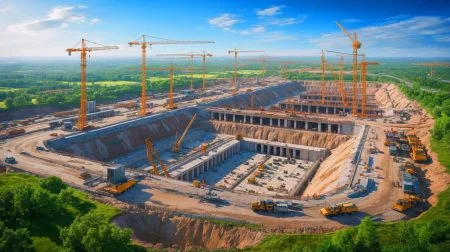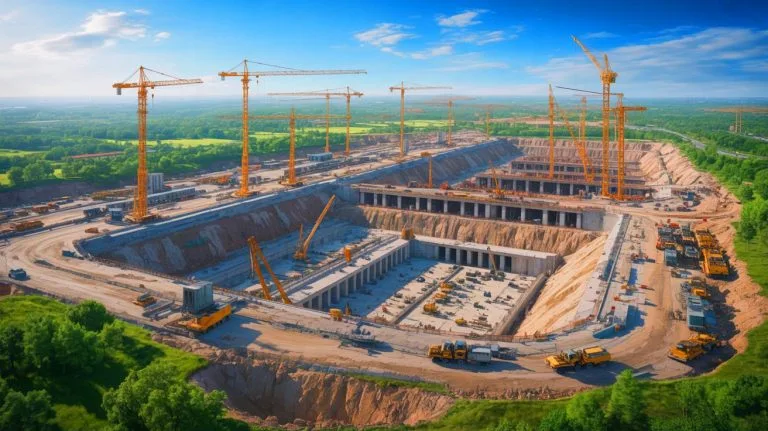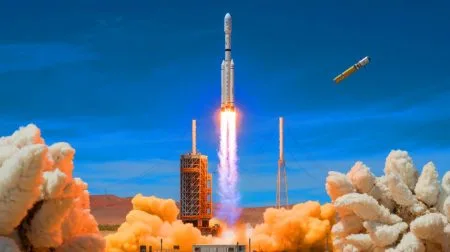| IN A NUTSHELL |
|
China is making significant strides in military infrastructure with the construction of what is believed to be the world’s largest military command center. Located near Beijing, this massive facility, often referred to as the ‘Chinese Pentagon,’ is drawing global attention due to its unprecedented size and strategic purpose. U.S. intelligence reports suggest that the center spans approximately 1,500 acres, making it nearly ten times the size of the Pentagon. This development is a crucial part of China’s broader military modernization efforts, which include expanding its nuclear capabilities and enhancing military integration.
The Scale and Purpose of the New Facility
The construction of this facility, situated roughly 20 miles southwest of Beijing, represents a significant leap in China’s military strategy. Satellite images reveal extensive excavation activities, indicating the presence of underground bunkers designed to protect China’s military leadership, including President Xi Jinping. The project’s scale and the number of construction cranes observed—over 100—highlight the complexity and ambition behind this endeavor.
This command center is reportedly being developed to withstand nuclear warfare scenarios, reflecting China’s intent to bolster its defense capabilities against potential precision-guided munitions and nuclear strikes. U.S. intelligence has described it as the world’s largest known military command center, underscoring its strategic importance. Experts believe that the new facility might replace China’s existing wartime headquarters in the Western Hills, offering advanced protection and communication capabilities.
Implications for China’s Military Strategy
The development of this command center aligns with the broader goals of the People’s Liberation Army (PLA) to modernize its forces. Under President Xi’s leadership, the PLA has been tasked with achieving operational capabilities against Taiwan by 2027. This involves not only expanding China’s nuclear arsenal but also integrating its military branches more effectively. The construction of such an advanced facility reflects a shift in China’s strategic military planning, emphasizing the need for secure wartime command structures.
Analysts suggest that the underground complex will play a crucial role in supporting China’s evolving military capabilities. This development is part of a larger strategy to establish a world-conventional force with advanced nuclear warfighting capabilities. The sheer scale of the project, along with its underground fortifications, indicates a significant shift in Beijing’s approach to military preparedness. Such advancements could potentially alter the balance of power in the region, prompting responses from other global powers.
Security and Speculation Surrounding the Site
Despite the absence of a visible military presence, the site is heavily secured, with restricted access and warnings against drone activity. Local sources describe it as a military zone, with access to nearby public areas blocked. This secrecy has fueled speculation about the site’s true purpose, with some questioning whether it is indeed intended to be a ‘Chinese Pentagon.’ The lack of commercial development indicators and online references further adds to the mystery.
Additionally, the construction has sparked discussions within China regarding the demolition of residential areas in Qinglonghu, where the facility is located. The Chinese government has remained reticent about the project, with the embassy in Washington stating its lack of awareness about the details. However, the scale and strategic importance of the site suggest a significant investment in China’s long-term defense strategy.
Global Reactions and Strategic Implications
The construction of this command center has not gone unnoticed by international observers. U.S. officials have refrained from public commentary, but the project’s magnitude has certainly caught the attention of global military analysts. The development is seen as a testament to China’s growing ambitions and its desire to assert itself as a dominant military power. As China continues to expand its military capabilities, other nations, particularly the United States, are likely to reassess their strategic positions in response.
Such advancements could lead to shifts in regional power dynamics, especially in the context of China’s relations with Taiwan and its broader geopolitical aspirations. The ongoing modernization of the PLA and the development of facilities like the ‘Chinese Pentagon’ reflect a strategic vision that could redefine China’s role on the global stage. As these developments unfold, the international community will be closely monitoring the implications for future military and diplomatic engagements.
As China continues to enhance its military infrastructure, the global community is left to ponder the implications of such developments. How will these advancements impact regional stability and international relations in the coming years?
Did you like it? 4.6/5 (22)








Wow, ten times the size of the Pentagon?! What’s China’s real endgame here? 🤔
Wow, ten times the size of the Pentagon? That’s massive! 😮